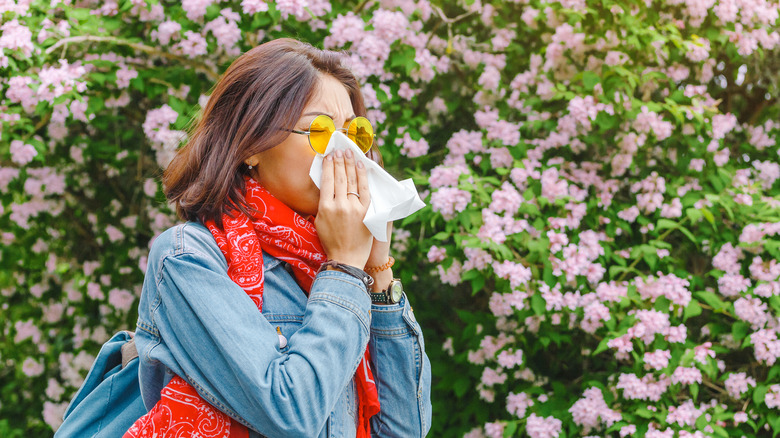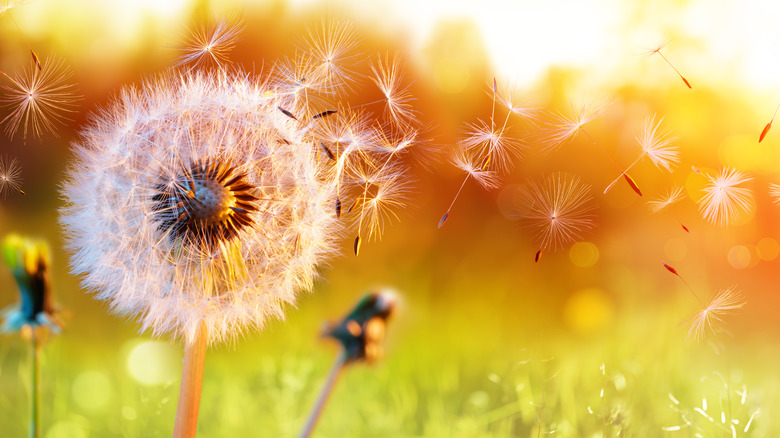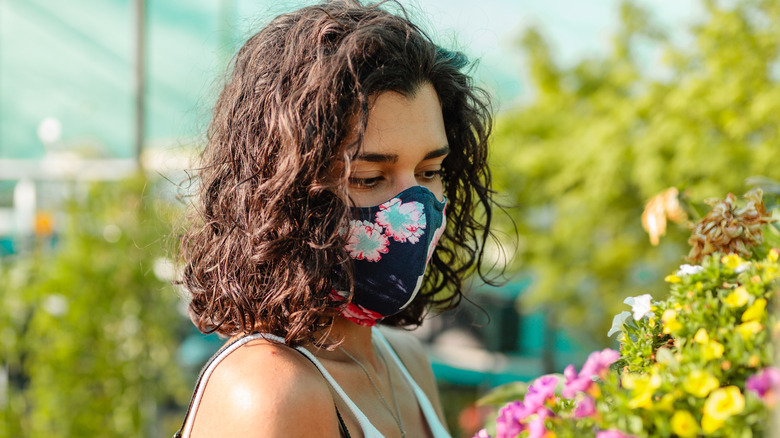Why Your Allergies Might Be Worse Than Ever This Spring
About 50 million Americans begin sniffling, sneezing, and coughing at various seasons of the year as different types of pollen are released into the air, according to Yale Medicine. Some reach for their allergy medicines as tree pollen becomes active in the spring, while others find their eyes itching in the summer from the grass pollen. Ragweed and mold are active in the fall months.
As these types of pollen circulate in the air, we breathe them in and they get trapped in our sinus passages. For people who experience seasonal allergies, their immune systems see certain types of pollen as a threat and respond with chemicals to deal with it. This results in allergy symptoms such as congestion, sneezing, and fatigue.
Although people with seasonal allergies learn to deal with their symptoms, they might be finding their symptoms starting earlier in the spring or lingering longer in the fall. This isn't a fluke. According to a report from Climate Central, allergy seasons have become longer and more intense because of more allergens being present due to climate change and greenhouse gas emissions.
How climate change affects allergy season
Climate Central's report found that pollen season in North America became 20 days longer and 21% more intense from 1990 to 1998. The report also said that the warmer, wetter weather associated with climate change creates an optimal environment for mold to flourish.
The growing season begins when the last freeze in the spring ends and continues until the first freeze in the fall. The growing season, on average, has become longer by two weeks; and points in the Western United States saw a 27-day extension of their freeze-free season since 1970.
Climate change also affects mold. Some species of mold also trigger allergies, and the amount of mold in the air can be higher when plants and leaves begin to decay. Mold doesn't necessarily die when the temperatures drop below freezing. Some species of mold can survive longer, particularly when the winter is mild.
The amount of carbon dioxide in the air influences how much pollen is produced and how much mold grows. More carbon dioxide means grasses, ragweed, and oak trees can be more allergenic, as can certain fungi that can trigger allergies.
People with asthma could also be affected by a longer allergy season since allergens often trigger asthma symptoms.
Easing the effects of seasonal allergies
If you suffer from seasonal allergies, Mayo Clinic has some suggestions to minimize their effects on your life. When it's dry and windy outside, stay inside. A good rain shower will wash away pollen, so that's the optimal time to get outside. If you're especially prone to seasonal allergies, have someone else take care of yard work such as cutting the grass or gardening. If you must do yard work, wear a mask that covers your face and nose to protect you from the pollen.
When you come inside from a significant time outdoors, immediately launder your clothes and take a shower. That will remove any pollen from your clothes and hair. And you don't want that pollen to get onto your bed pillows!
Check the local forecast for pollen counts. On days when they're high, take an over-the-counter antihistamine, decongestant, or corticosteroid nasal spray before you experience symptoms. You can also use a saline solution to rinse the pollen from your sinuses. Because pollen tends to be highest in the morning, opt for a spin class rather than a morning outdoor run.
According to Climate Central, you can minimize seasonal allergies by closing your home's windows and doors, running your air conditioning, and keeping your indoor humidity between 30% to 50%. Lower indoor humidity will prevent excess mold in your home. It's also helpful to have a high-efficiency particulate air (HEPA) filter in areas such as your bedroom to help with allergens.



